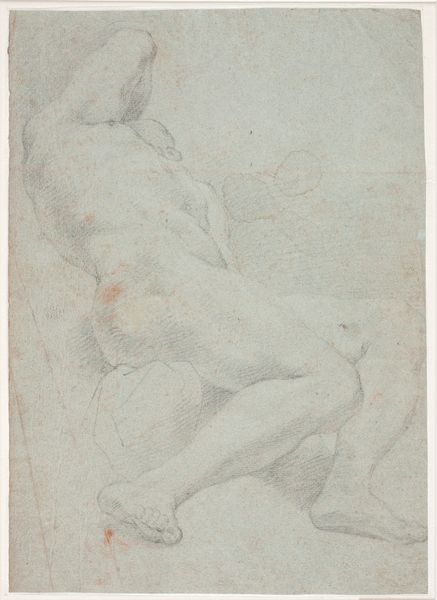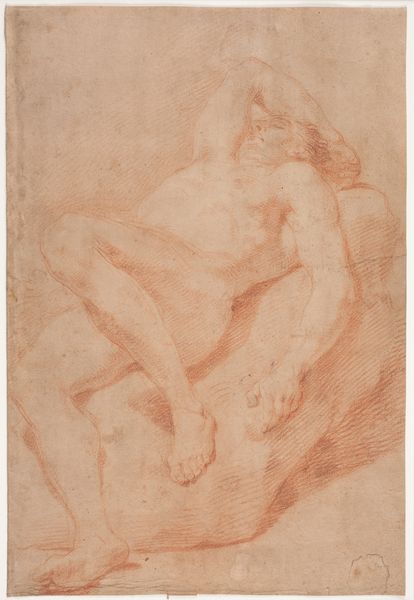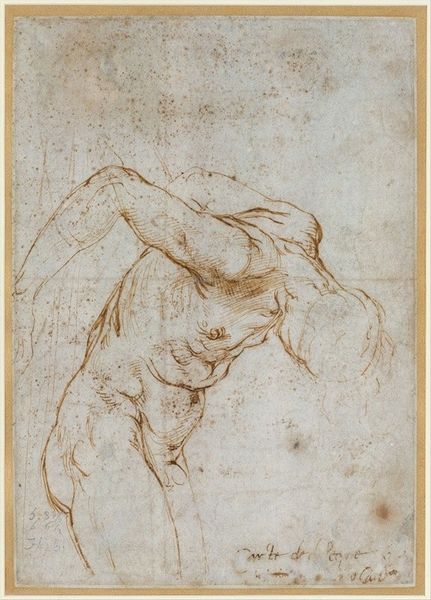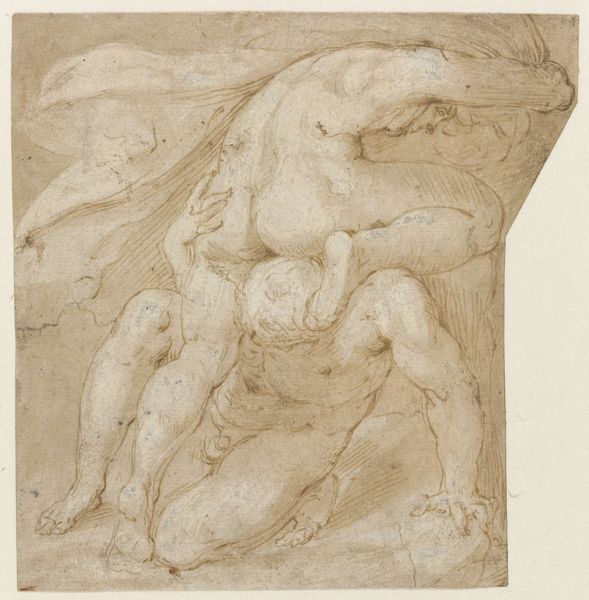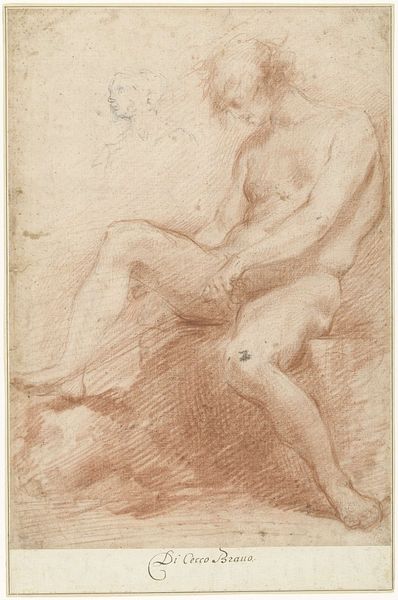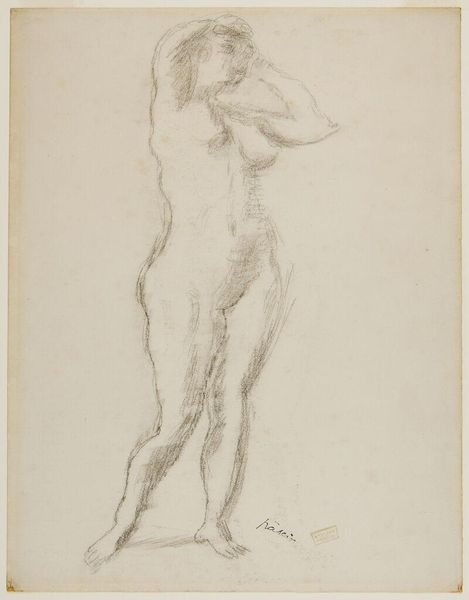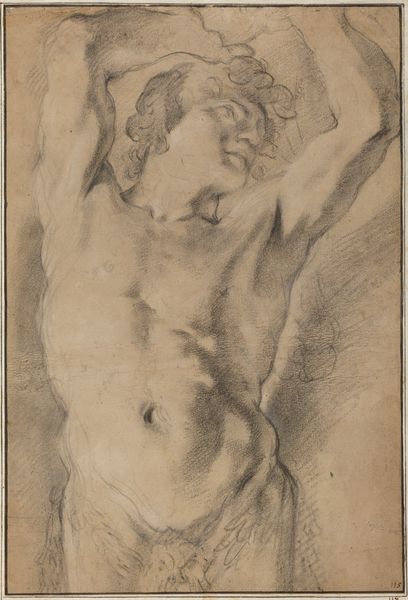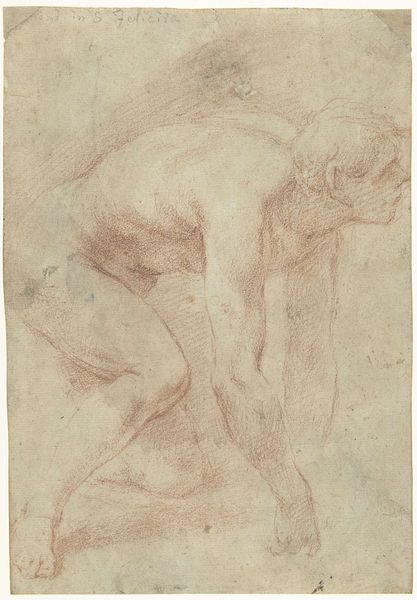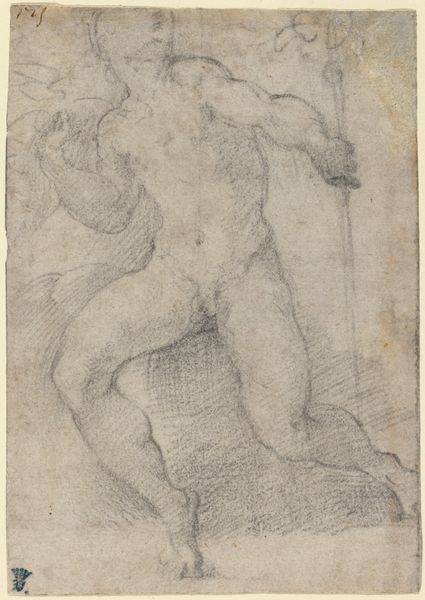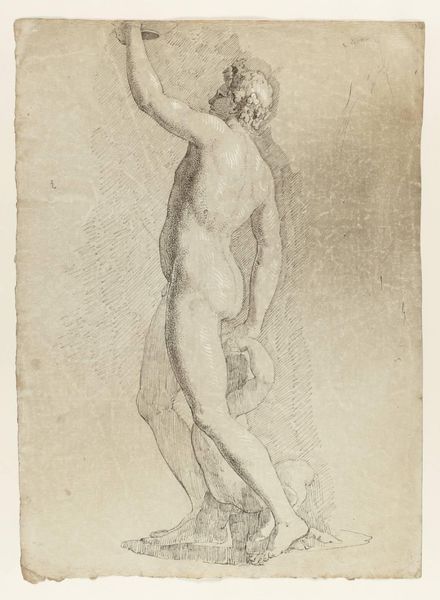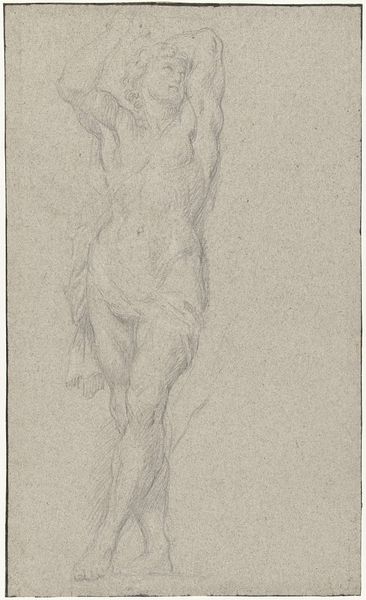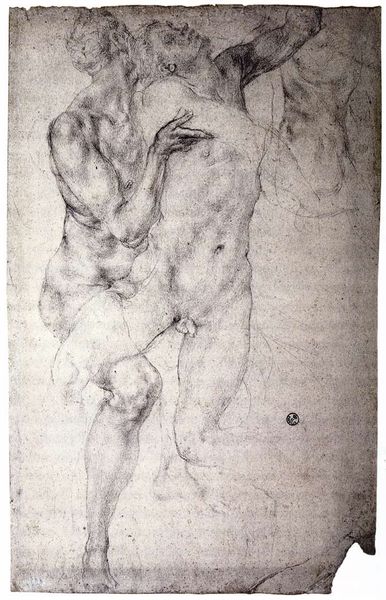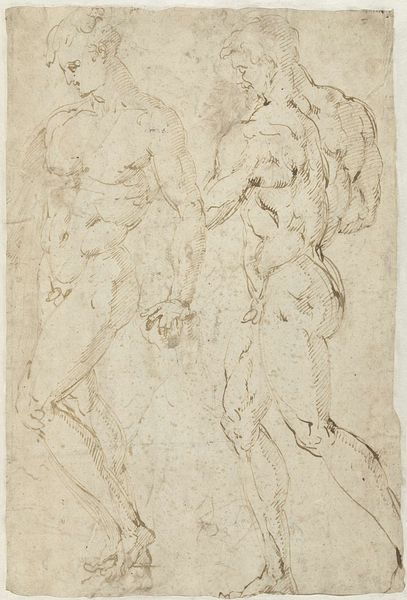
drawing, charcoal
#
drawing
#
charcoal drawing
#
11_renaissance
#
charcoal
#
nude
Dimensions: 219 mm (height) x 132 mm (width) (bladmaal)
Curator: We’re looking at an intriguing work on paper titled "A Kneeling Youth Seen from Behind." Created by an anonymous artist sometime between 1550 and 1600, it’s currently held at the SMK, the National Gallery of Denmark. Editor: My immediate response is a sense of vulnerable strength. The charcoal rendering gives the figure a tactile, almost sculptural quality, despite being on a relatively flat plane. The back seems burdened but also resilient. Curator: Charcoal lends itself well to conveying the subtleties of form and musculature. Consider the materials available during that time, how workshops operated. The charcoal would have been manufactured through a specific process, then used by an artist deeply trained in anatomical studies, likely working under commission or for a patron with access to such material resources. Editor: Absolutely. And consider who would have been privy to nude studies like these. These drawings, of course, engage with the tradition of the male nude in Renaissance art, which, at times, upheld narrow ideals of beauty and power—reinforcing existing hierarchies in gender and class. Whose bodies were deemed worthy of artistic representation? Curator: The level of detail in the rendering speaks to its intended purpose—perhaps a study for a larger painting or sculpture. One wonders what pigments might have been used, the source and distribution of such materials. We must also consider the paper itself—the process of creating and sizing it would have affected the artist’s work. Editor: But is this anonymous body idealized, or does it capture some element of human frailty or tension? The drawing begs the questions: How does this figure relate to broader socio-political themes such as subjugation or liberation in the 16th century? Who was the intended viewer, and what power dynamic does this viewing imply? Curator: A compelling piece indeed. It encourages us to think about art making not as solitary act but as an intricate dance between the artist, their material conditions, and the labor required. Editor: I think you’re right. This charcoal drawing offers so many complex layers related to the historical, social, and aesthetic considerations that underline artistic creation.
Comments
No comments
Be the first to comment and join the conversation on the ultimate creative platform.
